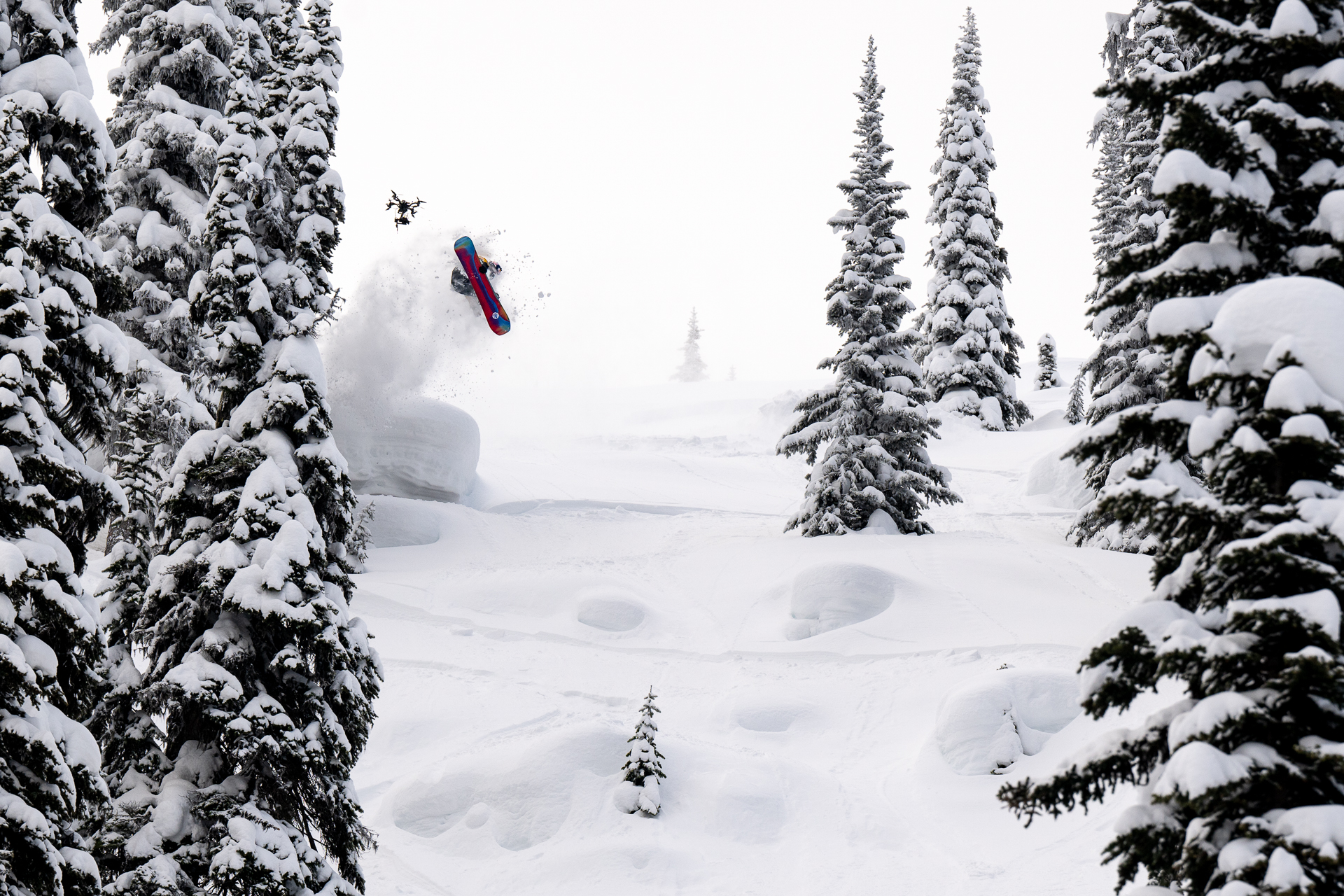Live From the Backcountry: How Uncle Toad’s Media Group Took REMI Production to New Heights With Natural Selection Tour Snowboarding
Inside the two-day effort at the tour’s marquee competition last month in Revelstoke
Story Highlights
The Natural Selection Tour has been referred to as “a manifestation of snowboarders’ wildest dreams.” When it comes to logistics, however, the live production of the backcountry freestyle competitions is more akin to a broadcasting nightmare. Despite the challenges, tour production partner Uncle Toad’s Media Group pulled off a flawless two-day REMI production at the marquee competition last month at Revelstoke Mountain in British Columbia.
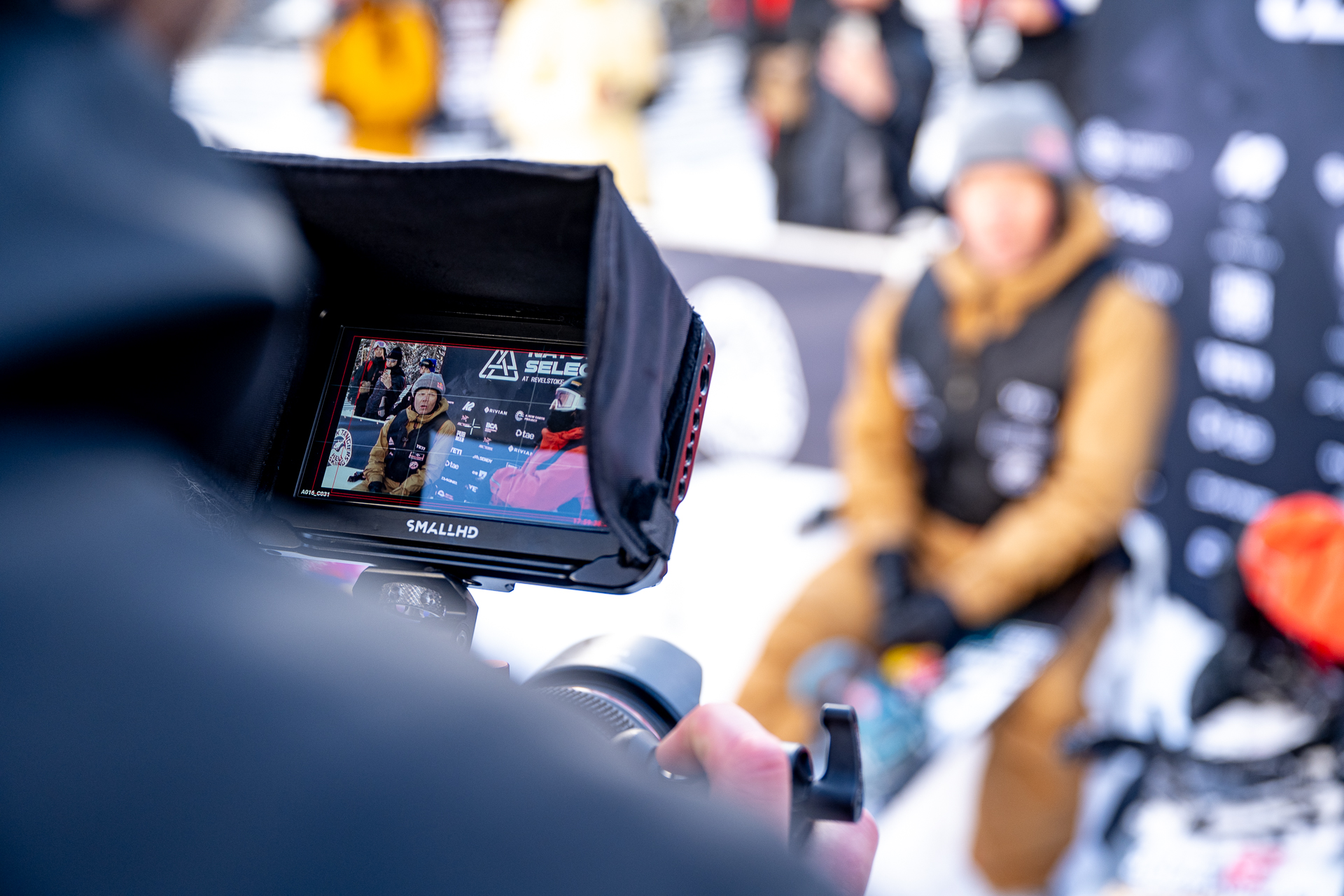
“Plenty of others have pulled off backcountry events like this with one or two cameras, and they do a solid job,” says Jordan Velarde, CEO/founder, Uncle Toad’s Media Group, who served as executive producer. “Our goal is to bring the same broadcast quality and style that you would have for a major live event. We pride ourselves on our ability to not be hindered by the technical limitations so that we can deliver an authentic show that’s on par with some of the [top productions] today.”
Launched in 2021, the Natural Selection Tour is the brainchild of legendary freeride snowboarder and film producer Travis Rice. The world’s top snowboarders — from Olympians to big-mountain film icons — come together to compete in men’s and women’s events. Twelve riders duel at six iconic mountain venues to earn the right to compete at Revelstoke along with 17 returning and invited Natural Selection Tour riders. Day 1 of the Natural Selection Tour Revelstoke event was streamed live exclusively on Red Bull TV on March 13., The finals at nearby Selkirk Tangiers on Day 2 premiered “as live” today at 1 p.m. ET.
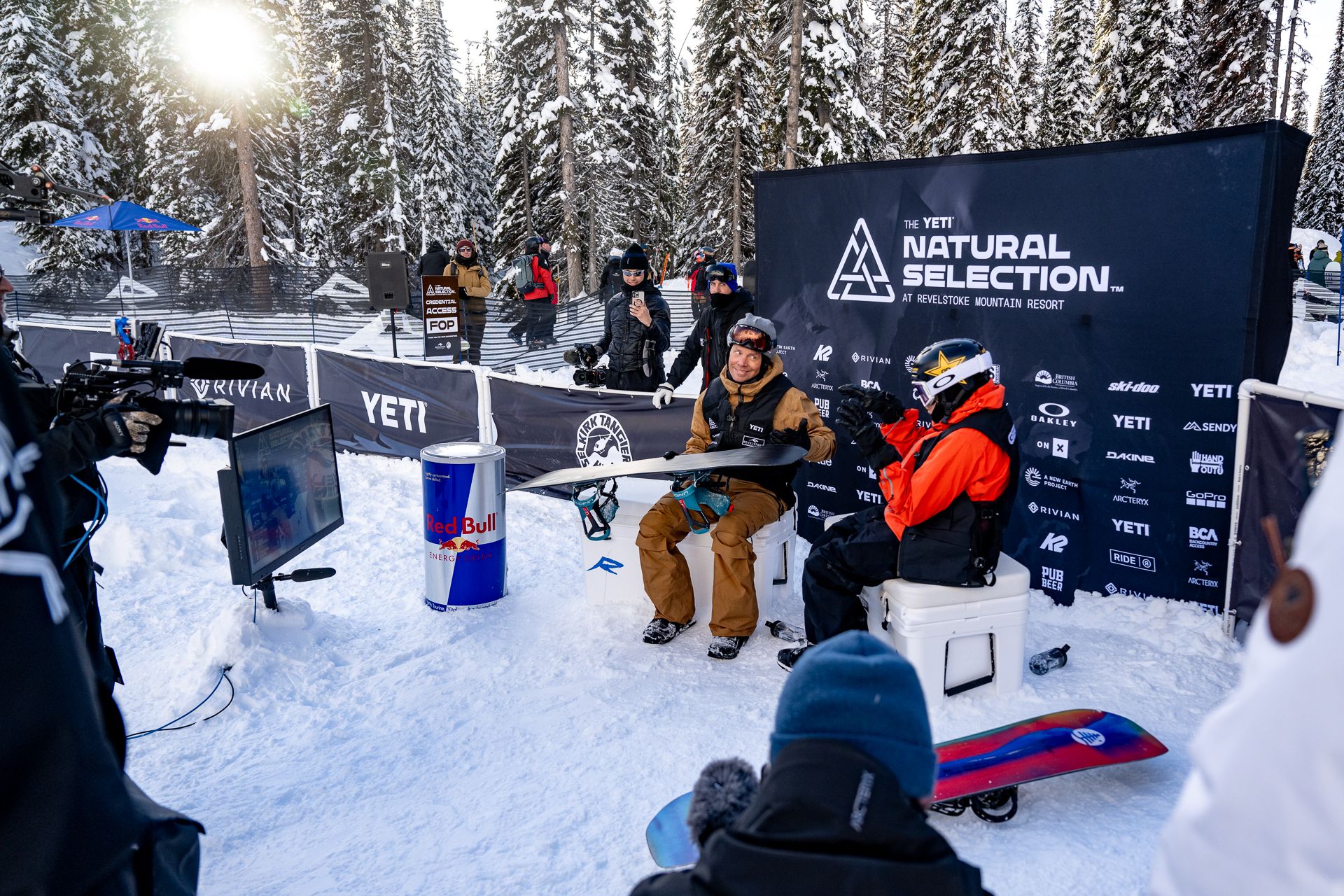
“If Travis Rice is doing a snowboarding event,” says Chris Steblay, executive producer/creative director, Uncle Toad’s Media Group, “the expectation is that we will match that Travis Rice quality and brand. We’re trying to produce something live that is on the same level as a Travis Rice movie but do it live and do it on a realistic budget. We want to hit a bar where it looks effortless [to the viewer] even though it’s actually one of the most difficult [productions] you could possibly imagine.”
Uncle Toad’s produced both days of competition in 1080p using a REMI-production workflow that linked the onsite operation in Revelstoke with a control room at Red Bull Media House in Santa Monica. CA. Onsite, the operation relied heavily on a pair of drones and several RF Wireless camera systems to cover the wide-ranging action. Camera feeds were backhauled to Red Bull Media House, where the production team cut the show and announcers called the action off monitors.
Years in the Making: From Jackson Hole to Revelstoke
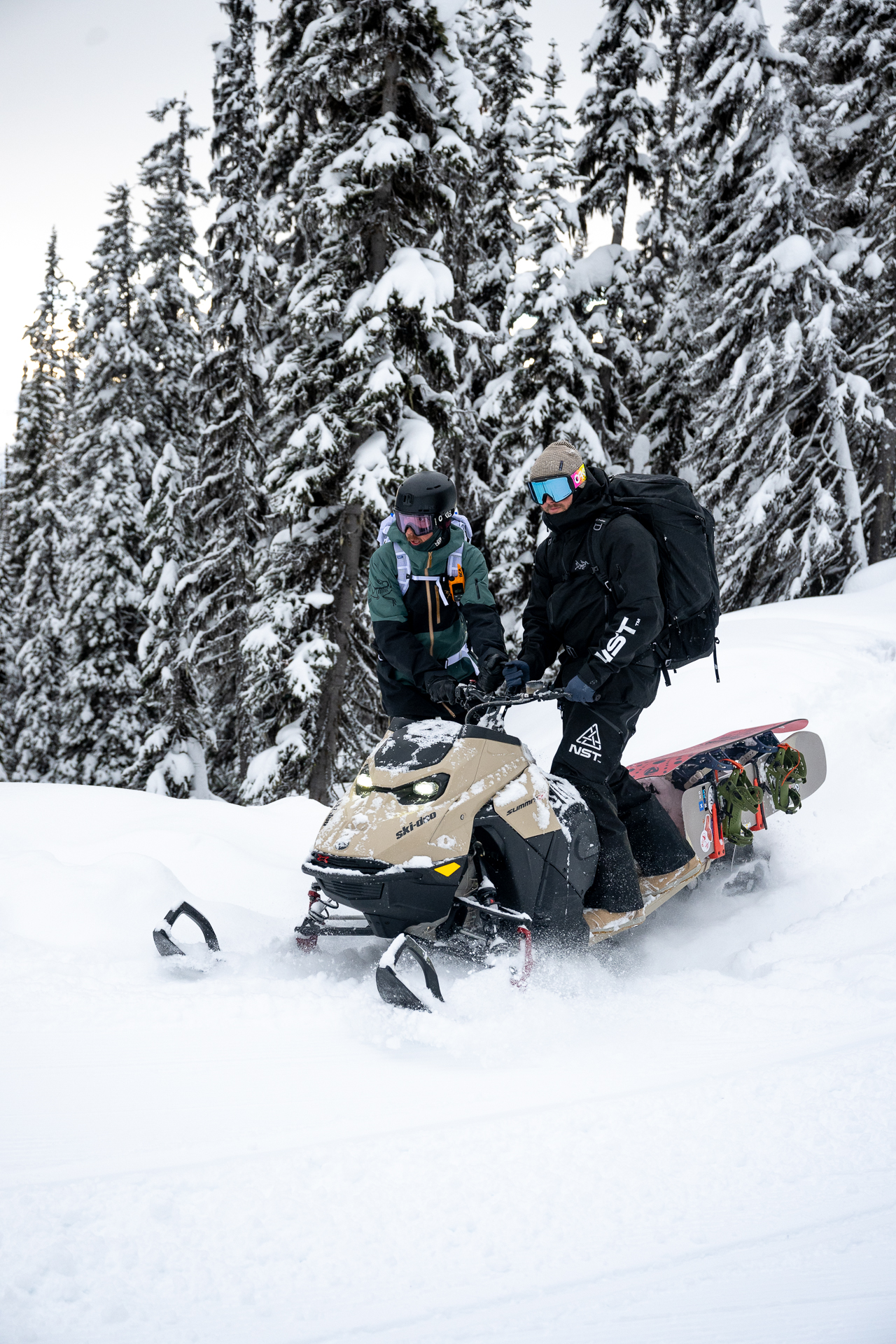
Velarde and Steblay began discussing the potential for producing the finals live with Rice and Natural Selection Tour COO Liam Griffin in 2018. Following COVID-related delays, their plans finally came to fruition in 2021 at Jackson Hole, WY. Uncle Toad’s rolled out a full mobile unit and several production trailers, parking them roughly a mile and a half from the venue in what Velarde describes as “baby steps on the way to a full REMI solution.” After two years using this production model, Uncles Toad’s went full REMI in 2023 when the finals moved to Revelstoke.
“From day one, the goal of this event was to be able to go absolutely anywhere in the world to find the best backcountry skiing and be able to broadcast that live,” says Velarde. “When we moved to [Revelstoke], we were required to have the same full production capabilities that we had in Jackson. That meant rethinking our [production workflows].”
Given the remote locale, all equipment had to be flown in via helicopter and dropped on the mountain. Further complicating matters was that the final course is often determined the day before the competition based on the current conditions.
“We have to scout several different locations and put production plans in place for covering all those possible spots,” Velarde points out. “No mountain is exactly the same, so you have to evaluate your transmission, your wireless systems, your camera units, and all the support for getting in and out of there.”
Adds Steblay, “One of our biggest challenges is the need for meticulous planning and packing. Once something enters the field in that position, it can’t move. Moving a single camera or [piece of equipment] can cost thousands of dollars and endless man-hours. And there’s no such thing as ‘we forgot a cable’; there’s no Amazon Prime or big electronics store. So the packing and the planning become very important.”
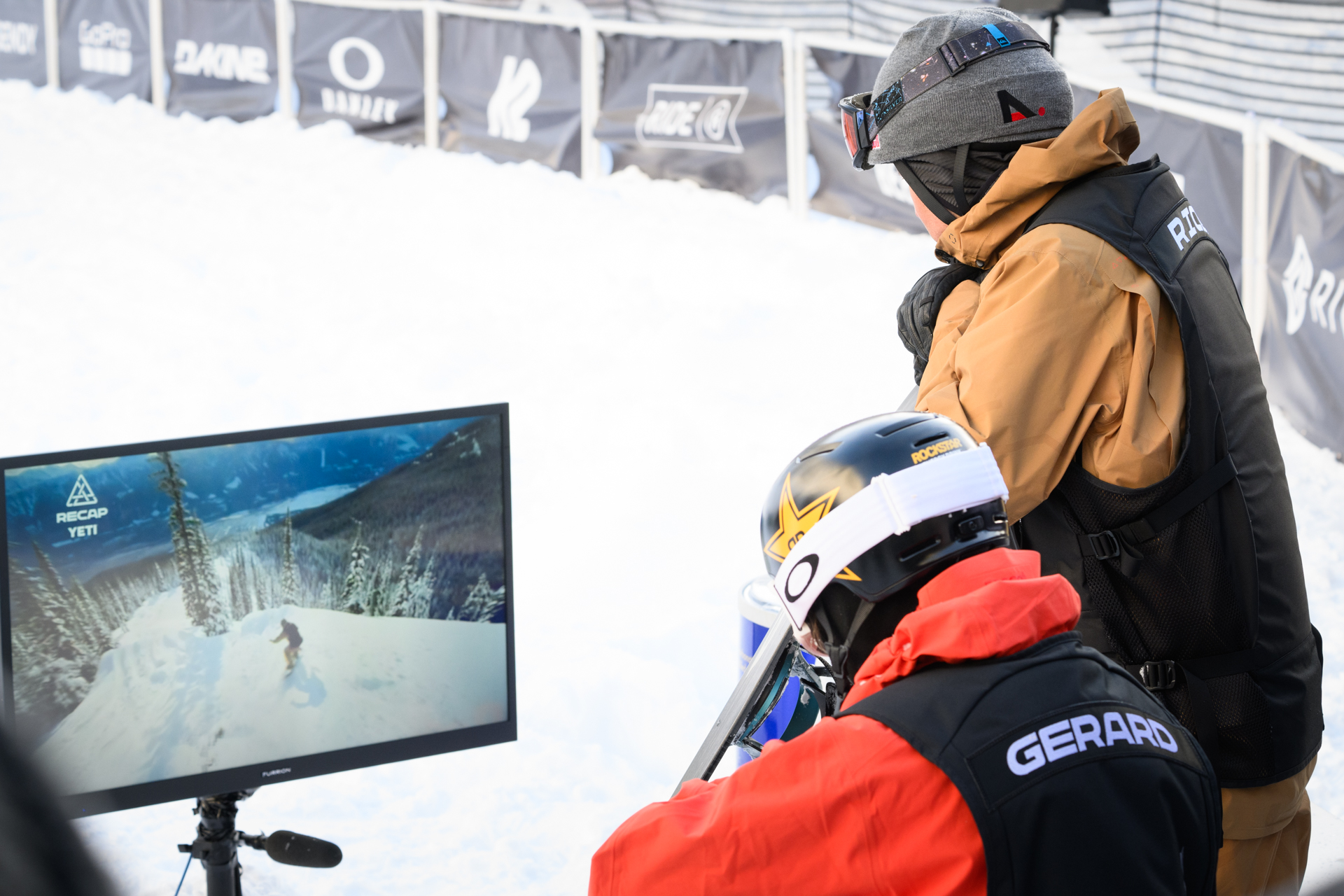
Onsite in Revelstoke: The BFT at the Center of It All
With just 19 crew members on hand, Steblay and his team set up a Mount Everest–style base camp — lovingly dubbed the BFT, or Big Fucking Tent. The BFT serves as the main point of acquisition for all camera and audio feeds, the primary hub for transmission and engineering, and home for the team piloting the drones. Its location is key: it must have line of sight to all camera positions as well as to the satellite uplink — not an easy task in an area of high ridge lines and extreme distances.
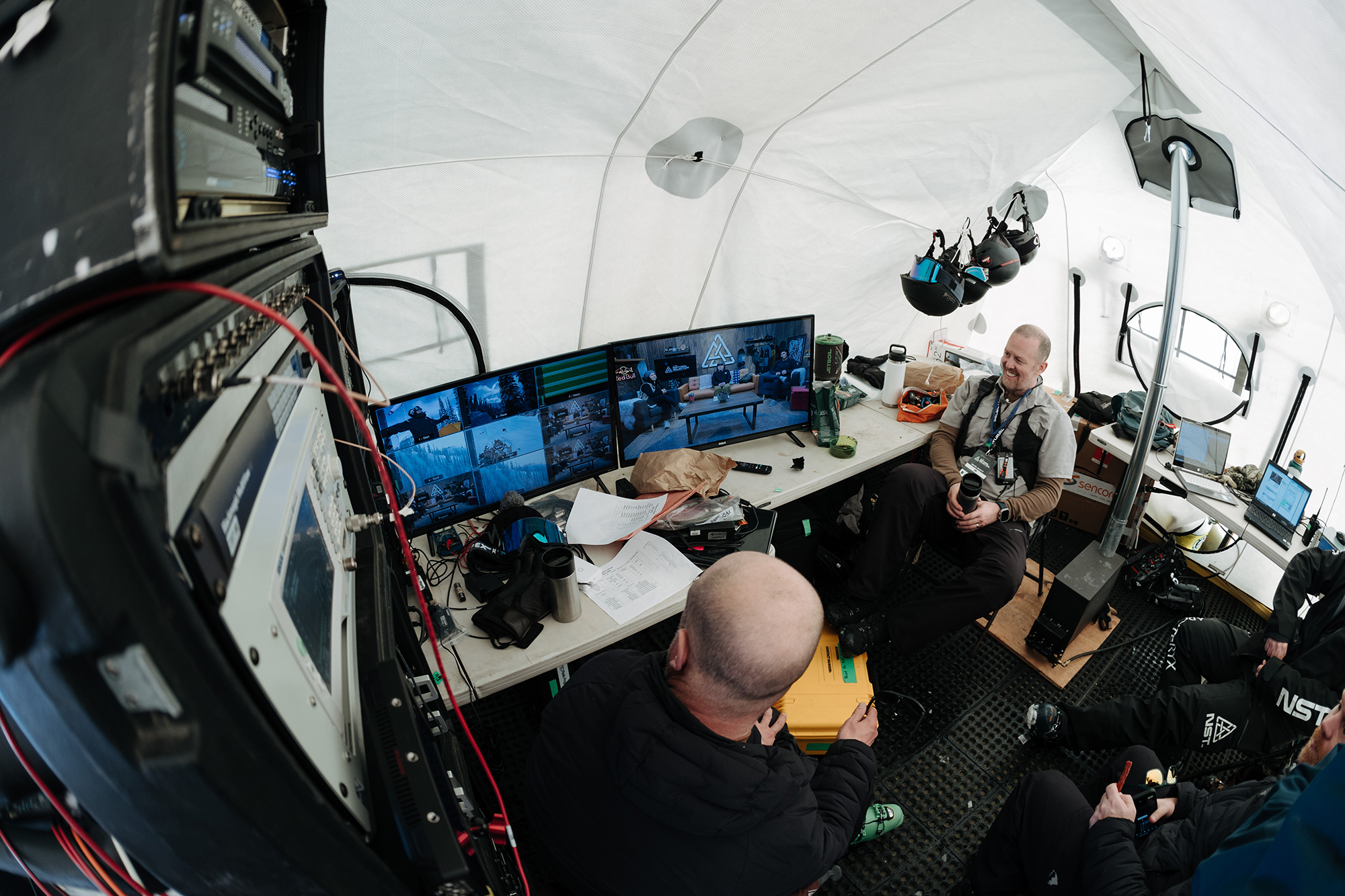
In addition, all crew members must be expert snowboarders capable of traversing the treacherous terrain and must also be safety-trained for potential avalanches.
“You not only have to be comfortable in the backcountry but you have to be a badass broadcaster — whether you’re a camera op or a video engineer,” says Steblay. “You have to be expert in both: you have to be really good at your job and really love to be in the mountains. We try to stick with the same people each year as much possible, and it has become a lot like a family.”
Camera Coverage: Drones, Wireless RF Cams Offer ‘Untethered’ Possibilities
Uncle Toad’s deployed nine cameras at Revelstoke, led by a custom FPV drone (with a DJI gimbal and Blackmagic Design studio camera) and a DJI Inspire 3 cinema-style drone. The FPV racing drone, which was nominated for a Sports Emmy in 2022, serves as primary coverage camera.
“The racing drone was born out of the fact that we simply can’t cover these venues traditionally with hard cameras,” says Steblay. “It would be a waste of resources to throw a ton of camera chains out there and get one shot from each of them for the whole show. The drone offers an angle that we can take pretty much anytime, and it’s absolutely beautiful.”
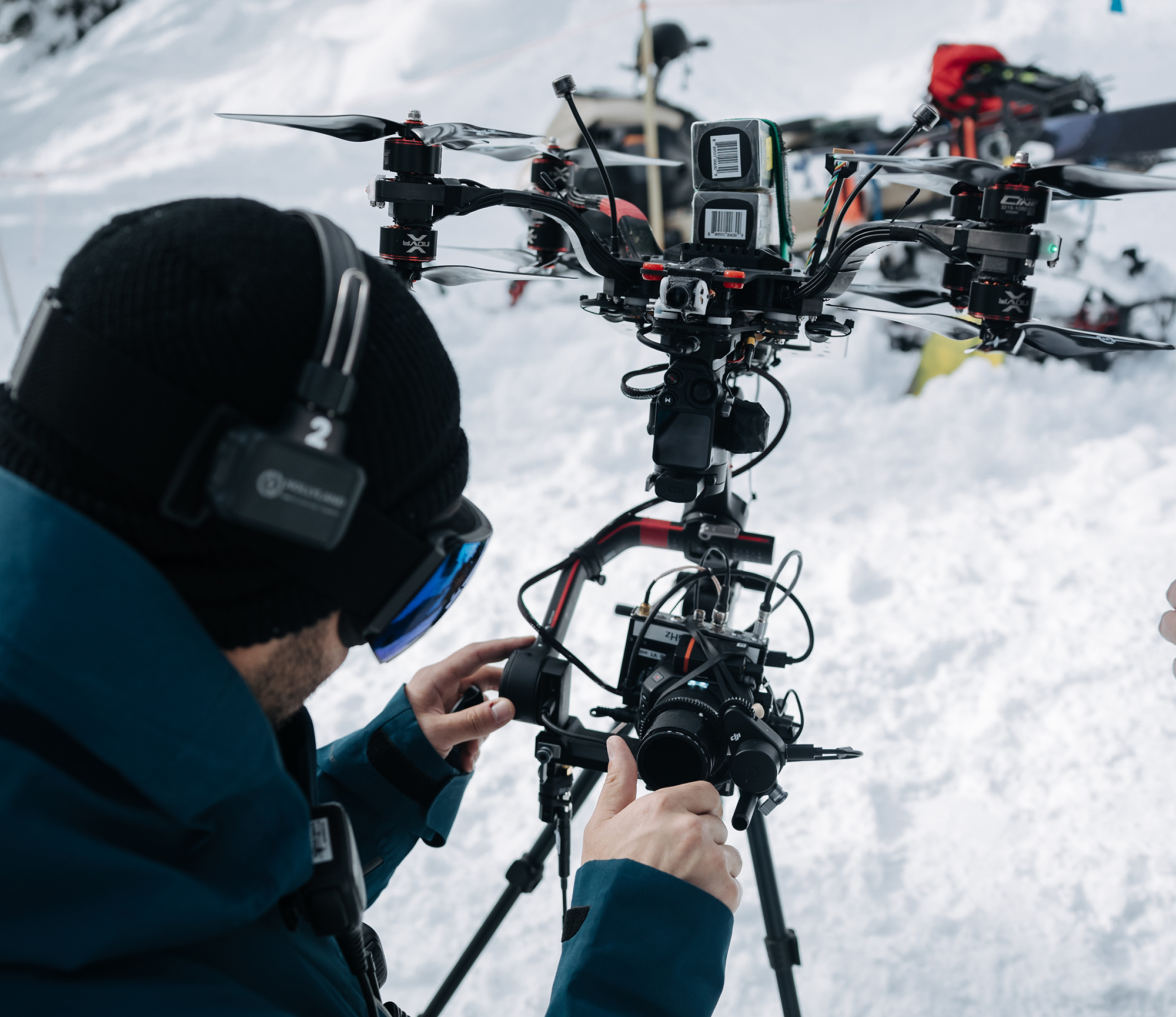
Meanwhile, the DJI Inspire drone offers cinematic, dramatic aerial shots similar to those provided by cameras on helicopters or fixed-wing aircraft.
“It mimics the authentic look of snowboard films,” says Velarde. “That’s a huge consideration when we’re picking our positions: how would they shoot a snowboard movie, or how does this look to the fans? We’re not trying to cover snowboarding like we’d cover basketball or football. We want to cover this authentically in a way that matches Travis’s films.”
The camera complement also included three Sony FX6 digital cinema cameras: a handheld at the start line, another at the finish line, and a long-lens system positioned at the BFT. The host set at the bottom of the mountain also featured three cameras. RF Wireless handled all wireless infrastructure and venue technical management in Revelstoke, including RF camera transmission via HEVC.
“We’re at a venue where you physically can’t run cable, so you have to run everything wirelessly,” says Steblay. “RF Wireless is one of the biggest partners in this project. We need to be fully untethered so that we can move around and be flexible depending on the situation.”
Red Bull REMI: Producing the Show in Santa Monica
All camera feeds and embedded audio paths (including communications) were muxed and transmitted via five satellite paths (LBiSat provided transmission services). Uncle Toad’s and Red Bull Media House worked with Tata Communications and Encompass Digital Media to backhaul the paths to Santa Monica. One return path carried the program feed and comms for the crew onsite at Revelstoke.
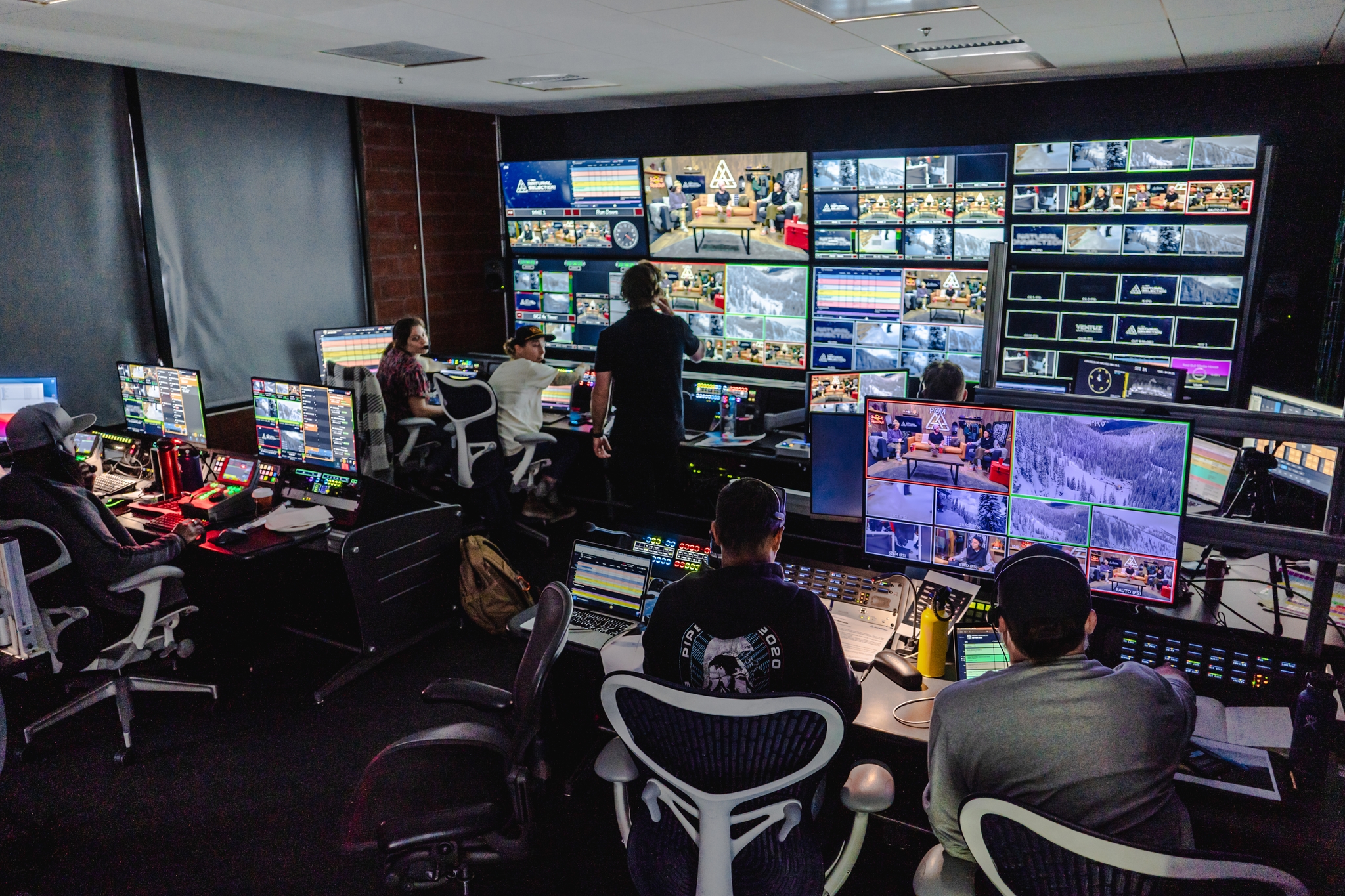
Uncle Toad’s has been deploying the same front bench —director, producer, assistant director, assistant producer — in Santa Monica since 2021. In addition, the production has an “Air Control” role to monitor and communicate with the various drones covering the action and helicopters transporting athletes up the mountain.
“With an event like this,” Velarde explains, “we rely heavily on our tech manager, and our director and live producer put in extra effort. We built the run of show with them to work around the different elements created by the REMI solution, such as latency in signal with communication to the venue and our timing on the drones.”
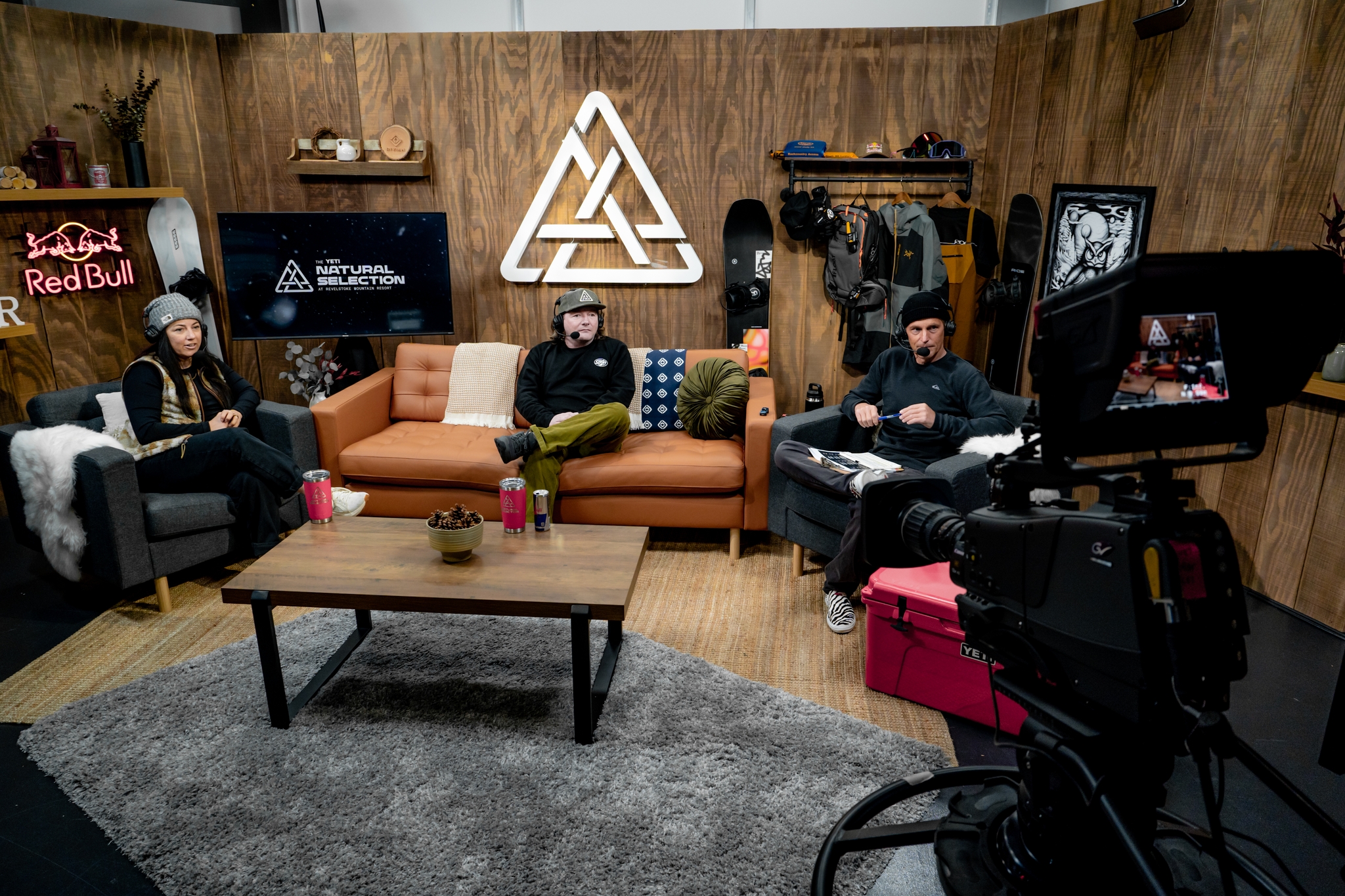
Also in Santa Monica, announcers called the competitions off monitors and communicated with the talent at the host set in Revelstoke.
“One of our biggest challenges is always communicating between the mountain talent on the set and the announcers in the booth,” says Velarde. “But it worked out well this year, and, at the end, we were even able to get a fun shot of [the talent] cheering from the mountain and receiving the cheers back in the studio as part of one of our sponsorships.”
Back at the Hotel: Graphics and Judging on an Island
Since judges needed to be onsite to evaluate the course and clearly communicate their expectations to competitors prior to the event, they were located at a hotel in Revelstoke. Uncle Toad’s deployed vMix’s software-based switching system to send a multiview of all cameras and replays from Santa Monica to the hotel for judging operations.
Rawmotion provided all live-scoring and data services for the event, and a member of its team was on hand at the hotel to ensure that there were no issues with the judges’ efforts. The operator also handled remote graphics insertion and CG playback from the hotel and was in constant communication with the director in Santa Monica via Unity intercom software.
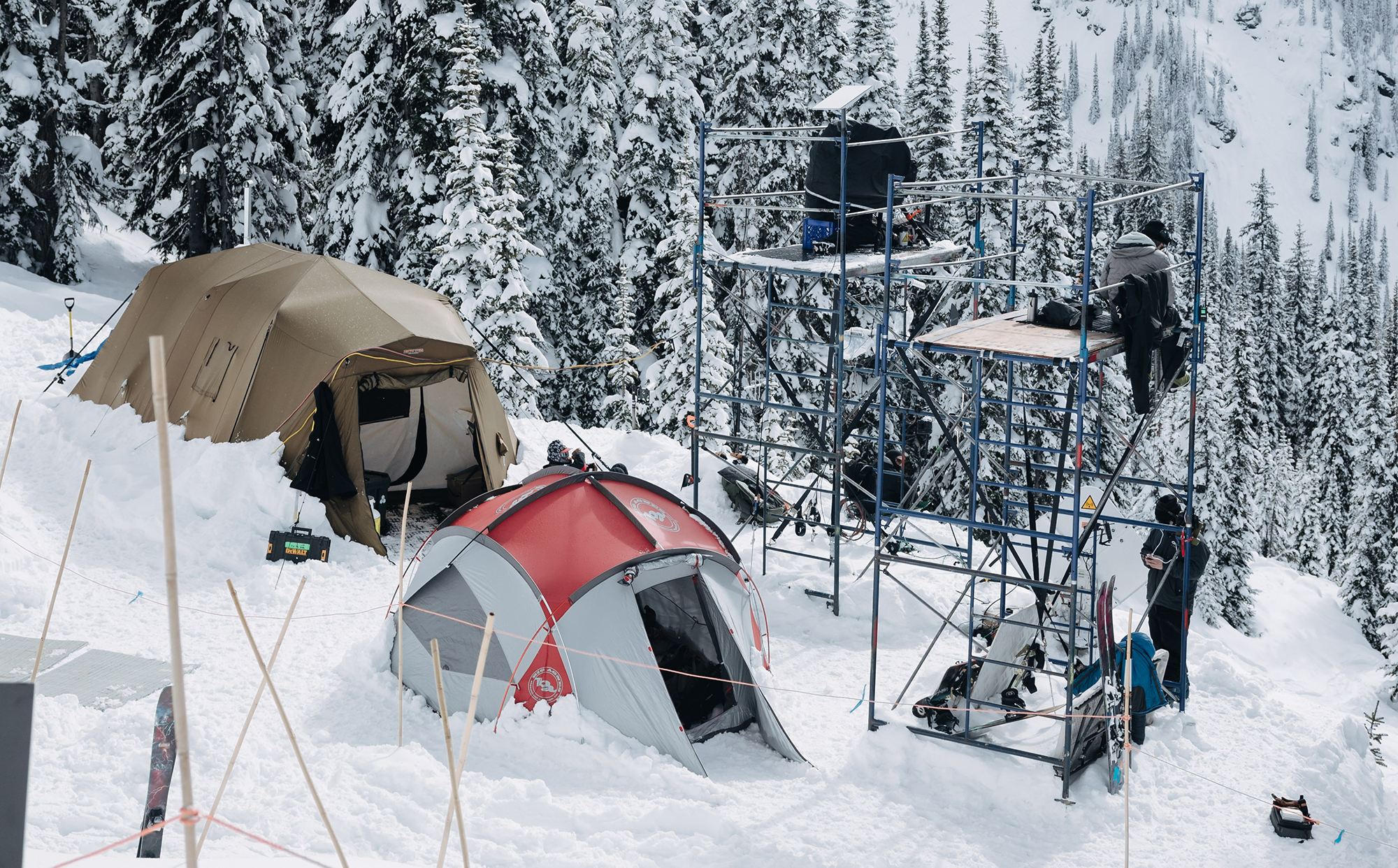
Besides Velarde and Steblay, the team comprised Director Lyle Fielmich; Live Producer Rima Rackauskas; Coordinating Producer Paulo Dias; Director, Production, Hillary Burgess; Production Manager Claire Mudie; Production Manager/Field Producer Natale Retzlaff; Production Coordinator Louise Hatton; Technical Manager Michael Spiteri; Technical Director Jason Savitt; Associate Producer Matt Johnson; and Associate Director Allyson Vecchione.
“We’re extremely proud of the team,” says Velarde. “This isn’t your traditional ‘walk up to a basketball court, throw cables down, and you’re good to go.’ It takes a huge amount of time to figure this out technically, and then just as much effort is put into delivering a compelling story while dealing with the challenges. We start preproduction on [next year’s tour] next month and will continue to push ourselves in terms of how we can make this show better. It’s always a blank slate: we don’t just stay in the same sandbox every year. There are so many new tools in the toolbox around the world, and we are always looking for new ways to produce a better show.”
